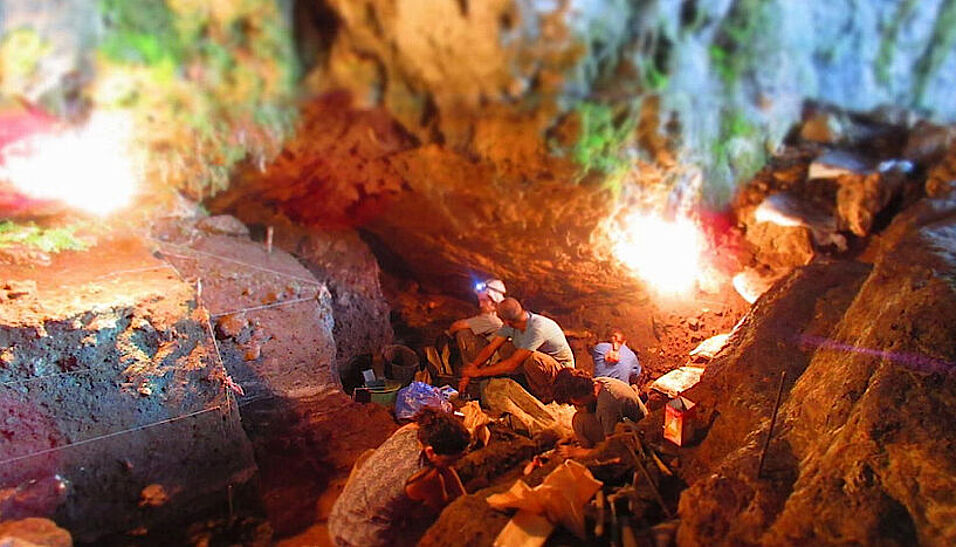The Satsurblia Cave was inhabited by humans at different times in the Paleolithic: So far, a 15,000-year-old genome of a human individual has already been sequenced at this site. No other human remains were discovered in the older layers of the cave.
Innovative approach enables DNA determination in environmental samples
Ron Pinhasi and Pere Gelabert, together with an international team including Susanna Sawyer from the University of Vienna and in collaboration with Pontus Skoglund and Anders Bergström from the Francis Crick Institute in London, have applied an innovative approach. This enables DNA determination in environmental samples using sophisticated sequencing methods and data analysis resources. This has enabled the recovery of a human environmental genome from the BIII cave layer that is approximately 25,000 years old and thus pre-dates the Ice Age.
This new approach proved that a human environmental genome can be recovered without skeletal remains. Analysis of the genetic material revealed that the SAT29 human environmental genome represents an ancient human lineage that continues in part in the present-day West Eurasian population. To confirm these results, the scientists made a comparison between the recovered genome and the genetic sequences from bone remains of the nearby Dzudzuana Cave. This provided clear evidence of the genetic similarity. This also eliminated the possibility of later contamination of the samples in the present.
Reconstructing past ecosystems
In addition to the identified human genome, other genomes were recovered from the environmental samples that originated from wolf or bison. The sequences have been used to reconstruct the population history of wolf and bison in the Caucasus, contributing to a better understanding of the population dynamics of these species. The researchers* now plan to conduct further analyses of the soil samples from Satsurbia Cave to gain insights into interactions between ancient fauna and humans, as well as effects of climate change on mammal populations. The ability to extract DNA from soil samples can reconstruct the evolution of entire past ecosystems.
Publication in Current Biology:
Gelabert et al. 2021. Genome-scale sequencing and analysis of human, wolf and bison DNA from 25,000 year-old sediment. Current Biology. DOI: 10.1016/j.cub.2021.06.023

